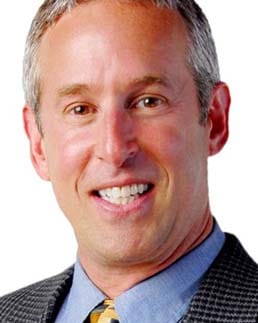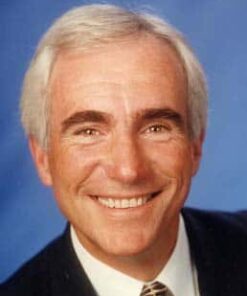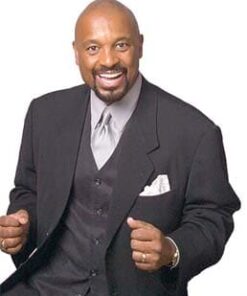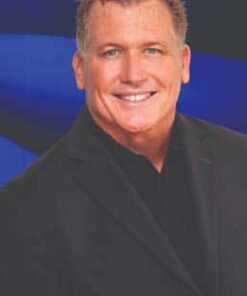The Energized Approach® for Effective Leadership, Growth and Change:
Those in a position of responsibility are often faced with the monumental task of “introducing change” and “getting people on board” Inviting participation in a new program or initiative can be daunting and time consuming. The Energized Approach by Michael Melnik helps companies“generate and capture” the energy needed for the success of any program or initiative. In this fun,high energy and information packed session Michael introduces the 10 essential energy sources and demonstrates how this time-tested approach reduces resistance and maximizes participation.As a keynote or closing presentation Michael reminds participants that once they leave the conference they will be faced with the challenge of implementing much of what they learned at the event. The Energized Approach energizes participants and offers them a strategy that helps them leave the event ready to create a work environment that is primed for action.
The How to Survive a Multi-Day Conference:
Multi-day conferences are designed to educate, inspire and send participants home energized and ready for action. Unfortunately, the nature of these events often has the opposite effect. Changes in eating, drinking, sleeping and exercise patterns combined with prolonged sitting in training sessions and standing in exhibit areas leads to fatigue, discomfort and an inability to remain actively engaged. It doesn’t need to be this way. In this high energy, fun and humorous session,Michael introduces a variety of simple, practical and time-tested strategies that will dramatically impact the comfort, energy and attention span of the group. Participants will receive tips on sitting, standing, sleeping, and moving through the event in a way that promotes comfort and sustains energy. Kicking off an event with this presentation sets a unique, positive tone and sends a strong message that the organizers want participants to remain comfortable, focused and energized until the event is over.
From Knowing to Doing: Getting the Most Out of Your Safety Training Efforts:
For years, the delivery of information has been the method of choice for inviting safe employee behaviors. Unfortunately it has become clear that there is a huge difference between what employees know and what they do with what they know. While information certainly has value, its impact is influenced not only by the quantity of content delivered, but also by HOW the content is developed, delivered, supported and received!
In this session, Michael introduces REP; The Rational, Emotional and Physical approach to effective training. This fun, high energy session takes a humorous look at training and offers insights and strategies for training that not only influence what participants know, but also what they do with what they know.
The Lighter Side of Sitting, Standing, Lifting and Stretching:
This is by far Michael’s most requested employee presentation. For years, organizations have tried desperately to teach employees the “right” way to lift, the “proper” sitting posture and how to stretch to reduce the risk of injury. Despite these exhaustive efforts the number of strains and sprains remains relatively unchanged. It’s time for a change. Is it possible that there isn’t a “right”way to lift and that maybe the way in which we are trying to influence employee behaviors in the workplace needs a major face-lift?
This high energy, fun and interactive session examines the myths and misconceptions surrounding“proper” body mechanics and offers practical and effective strategies to reduce claims and increase productivity and comfort.
If Change Were Easy, We’d All Be Perfect!
It is a fact of life that change is not only essential…it is unavoidable. Organizations continuously introduce new programs, policies and initiatives with high hopes of success. All too often these expectations turn to frustration when resistance kicks in. People do not typically resist change because the change itself is bad; they resist it because of how an organization develops,implements and supports (or doesn’t support) the change.
In this session, Michael introduces the 10 Essential Energy Sources of “The Energized Approach”and “REP; The Rational, Emotional and Physical Approach to Effective Change”. This time-tested strategy helps organizations focus attention on HOW change is introduced and supported. The result of this approach is increased participation, reduced resistance and an environment with participants at all levels who are motivated, receptive and open to change.
BLINK: An effective, practical & fun approach to stretching & warm-up programs:
For years, organizations have attempted to integrate stretching into the workday. The problem has been employee resistance, time constraints, perceived costs and low compliance. This session introduces a fun, simple, practical and EFFECTIVE strategy that allows organizations to bring stretching into the workplace in a way that maximizes participation, reduces resistance and gets great results. Blink is based on a fairly simple concept; Blinking! Employees blink their eyes all daylong in order to keep their eyes comfortable. The blinks take virtually no time at all, and the impact is powerful enough to keep the eyes fresh all day. The muscles of the body function the same way.All they really need is a periodic “Blink” or stretch to keep them fresh and productive.Not only is the Blink process simple to implement, it is the MOST EFFECTIVE way to reduce the risk at work. Warming up and stretching in the morning or at the beginning of a shift good, but as the body continues to work fatigue builds and “blinking” gives the body what it needs, when it needs it. Management likes the Blink Program because it takes very little time and costs very little money. Supervisors like the Blink Program because they don’t need to “babysit” or manage it and the employees like it because they own it and it is personal to them.
The Language of Safety Every day, organizations do hundreds of things in the name of health and safety. They implement policies and procedures, conduct training classes and put up posters. While these activities consume a great deal of time, energy and resources they don’t always lead to the desired results.It turns out that in many instances the outcome has less to do with what is being done and more to do with the language that is used by those responsible for driving safe behaviors. It has been demonstrated that small changes in what is said and how it is delivered makes a significant difference in how it is received and acted upon. This fun, high energy and humorous session offers simple strategies for creating a language around safety that helps everyone in your organization maximize the impact of their efforts.











